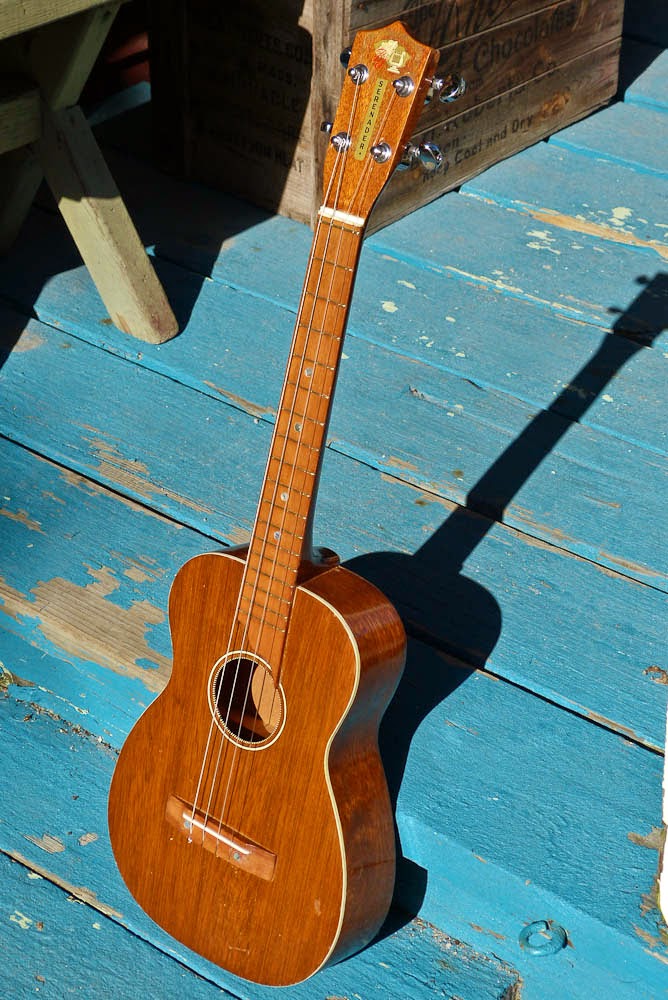c.1970 Japanese-made B&J Serenader Baritone Ukulele
These sorts of all-laminate mahogany baritone ukes were made in Japan through the 60s and 70s and came under a variety of names. They're all pretty basic, practical things and are sturdy as heck. This one came in via a trade a long time ago and has been sitting around waiting for me to work on it... so I finally did. It got a light fret level/dress, setup, seam repairs, and a couple of bolts added to the bridge (more on that below). Missing stick-on position markers were also replaced with abalone dots.
It's a good player with a quick feel and while it's not as loud and bright as a modern laminate bari, it does have a simple mellow charm to its sound.
The Grover Rotomatic tuners are totally unoriginal but they do beat friction pegs for ease of use...
Note the odd "nut" which is more like a string spacer as this has a "zero fret" which acts as the nut. To make the setup proper I made sure the zero fret was leveled to the rest of the frets. I then had to cut the "nut" (spacer) a bit to keep the strings from buzzing in its molded-and-popped-on original form.
While the neck is a solid hunk of mahogany the board appears to be some sort of Asian hardwood: it's smooth and easy on the fingers like maple but... it isn't. Curious stuff and it has a finish like on Fender maple board necks.
The bridge had some lift on its rear so rather than regluing it I simply drilled and countersunk some bolts instead. This is #1 an inexpensive uke but it's also a laminate uke and in my experience with these guys what tends to happen when you reglue the bridges to the top on these instruments is that the 1st layer of laminate tends to peel off of the 2nd layer after you've sanded it enough to get a good gluing surface and then you have the bridge just pulling up again but with a weakened top. On something so un-fancy this is a perfectly acceptable option.
By the way... new synthetic saddle.










Comments